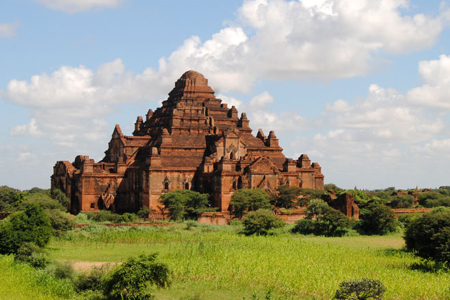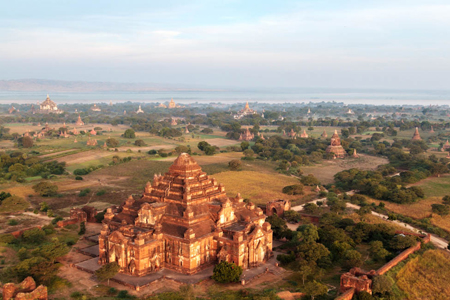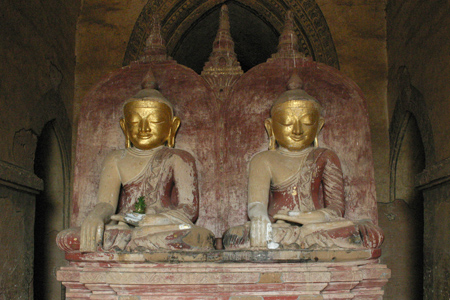Estimated began in 1166, left incomplete
Merit of King Narathu (r. 1166-1170)
One of the most outstanding masterpieces to discover in a Bagan tour.
A stone inscription in Bamar dated 1166 set into a pillar in the temple records the donations that a princess made on her mother’s behalf; she might have been half sister to Narathu. It listed slaves, gardens, water tank paddy fields, cattle, etc.

Narathu must have started construction as soon as he came to the throne in 1166 and thus enabled the princess to leave the inscription but he did not live to complete it. Four years later he was dead, killed by Indian assassins.
Placed in front of a shrine inside the dark temple is a slab of rock with a deep depression in the shape of a bended arm, and across where the wrist would be is another, deeper groove: according to folklore the bricks must be so closely fitted that a needle could not be inserted between them and if it could be, the king would have the mason’s hand chopped of. The brickwork in this temple is undeniably fine. The temple is of red brick with most surfaces not yet plastered and without fine decorative touches.

Within the enclosure wall is a ruined two storey monastery, from which one could guess the inner plan and size of a monastery of the Bagan era. There are still many similar and almost-undamaged monasteries to be seen, especially at the Hsinbyu Shin Monastic Complex near the Tayoke Pyay Temple.
Many scholars believe that Narathu was trying to surpass the merits of his ancestors of the Ananda and the Thatbyinnyu Temples, by initiating this hulking mass. In spite of the size, he came nowhere near approaching the grandeur and beauty of either the graceful Ananda or the magnificent Thatbyinnyu.

